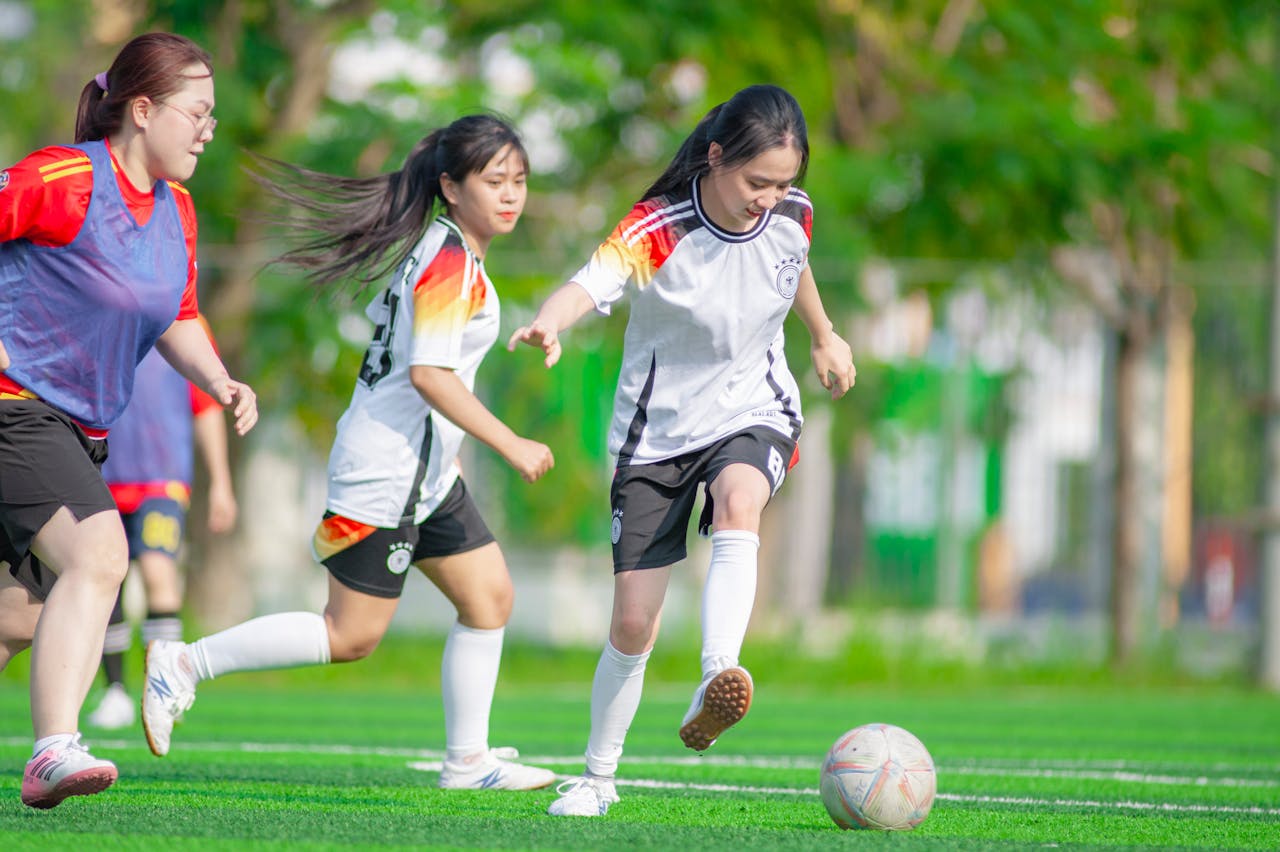We are facing a quiet crisis in some Australian schools—one that could have profound and lasting impacts on the health, wellbeing, and cohesion of our next generation.
And it couldn’t be more timely to talk about it: May is Exercise Right Month, an initiative of Exercise & Sports Science Australia (ESSA) that champions movement for mental, physical, and social health.
Despite our nation’s strong sporting identity and the well-documented benefits of physical activity, structured sport and physical education are coming under pressure in some Australian schools. One local school in Toowoomba recently communicated that it can no longer sustain interschool sport during school hours for its secondary students. The reason? Mounting logistical, financial, and staffing pressures.
The result? The school says its only remaining option is to shift toward out-of-hours interschool competitions. This would bring greater demands on staff, higher costs to families, and reduced access for students who face barriers outside of school hours. The school is currently consulting its parent community on whether sport should continue at all in the secondary timetable—including whether to replace the existing in-school double sport period with study time instead.
The message is clear: school sport, as we know it, is on the chopping block.
Based on feedback I’ve had since posting this article, it appears this trend with schools isn’t happening everywhere – but it’s not isolated either. There are simliar reports in other areas, where schools have scaled back sport due to rising costs of transport and limited staffing. While it’s unclear how widespread this issue is, it raises questions, about how vulnerable school sport and PE are to competing curriculum and budgetary pressures.
Why Sport in Schools Matters
Physical activity, especially team-based sport, is not an “extra.” It is a critical pillar of adolescent development.
The Australian Physical Activity Guidelines recommend that young people aged 13 to 17 years accumulate at least:
- 60 minutes of moderate to vigorous physical activity daily, including activities that strengthen muscle and bone at least three times per week.
- Limiting recreational screen time to no more than two hours per day.
These are minimum recommendations. According to research, optimal benefits are seen when physical activity reaches 90-120 minutes of movement daily spread across intensities, particularly for improvements in mental health, cognitive performance, and long-term cardiometabolic health. The additional minutes of movement may be obtained through lower intensity and incidental activity (which may include bursts of moderate-vigorous intensity), such as walking to school or active transport, and engaging in social and recreational activities that are active (opposed to sedentary, passive choices like screen time).
The Reality: We’re Falling Dangerously Short
Yet most Australian teenagers do not meet even the minimum guidelines. According to the Australian Institute of Health and Welfare and Australian Bureau of Statistics:
- Fewer than 1 in 10 adolescents meet daily activity recommendations
- Over 80% exceed the recommended screen time limits
- Rates of teen obesity, type 2 diabetes, and mental health conditions are rising year on year
A global analysis published in The Lancet ranked Australian teens among the least physically active in the world – coming in at 140th out of 146 countries in meeting the World Health Organization’s physical activity guidelines. A confronting reality with serious implications for their mental health, emotional resilience, social connection, and long-term physical wellbeing.
Schools as Hubs of Health and Community
Regular participation in physical activity during childhood and adolescence has been shown to be one of the strongest predictors of lifelong physical activity habits, and ongoing physical activity through adulthood remains one of the strongest ongoing protective factors against chronic disease and mental health through the lifespan.
When physical activity and sport are integrated into the school day, we remove barriers: cost, transport, time, and family logistics. We make movement equitable and accessible for all students—not just those whose families can afford club sport or who are free after hours.
School sport—particularly team sport—offers more than just movement. It creates a sense of belonging. It teaches young people how to function not just as individuals, but as parts of a team—a group working toward shared goals, learning to rely on one another, and growing through both success and adversity.
Schools that foster these experiences—whether faith-based or secular—nurture community-minded leaders and empathetic peers. These are the kinds of young people we need shaping tomorrow’s workplaces, families, and society.
What’s at Stake if We Let This Slide?
The implications of sidelining school sport are wide-reaching:
- Increased rates of teen anxiety, depression, and social isolation
- Higher rates of sedentary behaviour, obesity, and related metabolic conditions
- Widening inequality between students with and without access to extracurricular sport
- A generation less connected, less resilient, and less equipped for teamwork and leadership
And let’s not forget—this shift is happening while many schools reduce PE to as little as one class a fortnight. That’s just 50 minutes every two weeks. It’s not even 15% of the minimum activity recommended by national health authorities.
A Call to Action
It’s time for parents, health professionals, educators, researchers, and policymakers to unite on this issue. We need urgent, collective advocacy to:
- Rebuild the value of school sport and PE in national and state education frameworks
- Advocate for curriculum-embedded physical activity that ensures access for every student
- Secure government funding and community partnerships that make school sport viable
- Elevate physical activity as a core investment in mental health, academic success, and lifelong wellbeing
At Thrive Wellness, our team of clinical psychologists, nutritionists, and exercise physiologists see firsthand the impact that lack of movement and connection has on the young people we support. We also see the powerful change that occurs when physical activity is part of a student’s regular rhythm—a structured, purposeful, and social foundation for physical and emotional regulation, cognitive performance, identity, and personal growth.
What Can You Do?
- Start conversations with your school’s leadership about the value of PE and sport
- Join or create parent advocacy groups
- Write to your local MP, Minister for Education, and Minister for Health
- Encourage media coverage of the issue
- Partner with local sporting organisations or health professionals to create solutions
School sport is more than exercise—it’s a protective factor for youth wellbeing. It builds identity, belonging, teamwork, and resilience at a time when these traits are desperately needed.
If we truly care about the wellbeing of students and preparing young people for the future, we must act now. The youth mental health crisis is already here—and the erosion of school sport and PE is part of the problem.
Let’s not wait until we’ve lost even more to realise what’s already been taken. It’s time to turn the tide—for the health, hope, and future of our young people.
Helpful resources:
https://www.health.gov.au/topics/physical-activity-and-exercise/physical-activity-and-exercise-guidelines-for-all-australians/for-children-and-young-people-5-to-17-years
https://www.aihw.gov.au/reports-data/behaviours-risk-factors/physical-activity/overview
https://exerciseright.com.au/
https://www.ausport.gov.au/
https://www.thelancet.com/article/S2352-4642(19)30323-2/fulltext
https://www.who.int/news/item/22-11-2019-new-who-led-study-says-majority-of-adolescents-worldwide-are-not-sufficiently-physically-active-putting-their-current-and-future-health-at-risk

About the author:
Felicia McQueen is an Accredited Exercise Physiologist (AEP) and Certified Practicing Nutritionist (CPN) at Thrive Wellness. With qualifications in nutrition, exercise science, and neuroscience, she supports mental health through personalised, evidence-based care. Felicia works as part of a collaborative interdisciplinary team alongside clinical psychologists to deliver integrated support.
Author’s note – 15 May 2025
This article has been updated following valued feedback from parents and professionals in other areas, who shared that some schools in their local areas have expanded sport and physical activity programs in recent years. These positive accounts of schools responding to health advice and government leadership to increase access to physical activity and sports in schools, stand in contrast to challenges faced by other schools, including the Toowoomba school who brought this issue to my attention last week. The conversation is no less important. Ensuring all students have equitable, consistent access to sport and physical education must remain a national priority.


Leave a Reply